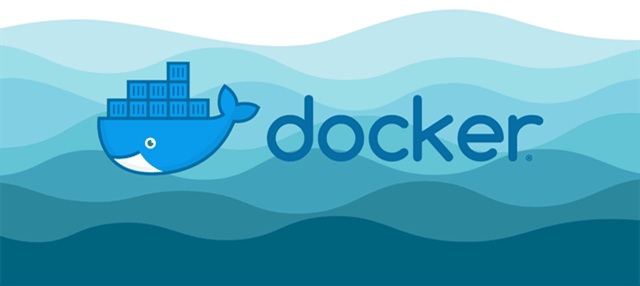
Ubuntu20.04安装Docker
Docker 是一个开源的应用容器引擎,让开发者可以打包他们的应用以及依赖包到一个可移植的镜像中,然后发布到任何流行的 Linux或Windows操作系统的机器上,也可以实现虚拟化。容器是完全使用沙箱机制,相互之间不会有任何接口。
一、Docker介绍
Docker中⽂社区⽂档:https://www.docker.org.cn/index.html
Docker 是⼀个开源的软件部署解决⽅案。
Docker 也是轻量级的应⽤容器框架。
Docker 可以打包、发布、运⾏任何的应⽤。
Docker 就像⼀个盒⼦,⾥⾯可以装很多物件,如果需要某些物件,可以直接将该盒⼦拿⾛,⽽不需要从该盒⼦中⼀件⼀件的取。
Docker 是⼀个客户端-服务端(C/S)架构程序。客户端只需要向服务端发出请求,服务端处理完请求后会返回结果。
Docker 包括三个基本概念:
镜像(Image)
Docker的镜像概念类似于虚拟机⾥的镜像,是⼀个只读的模板,⼀个独⽴的⽂件系统,包括运⾏容器所需的数据,可以⽤来创建新的容器。
例如:⼀个镜像可以包含⼀个完整的 ubuntu 操作系统环境,⾥⾯仅安装了MySQL或⽤户需要的其它应⽤程序。
容器(Container)
Docker容器是由Docker镜像创建的运⾏实例,类似VM虚拟机,⽀持启动,停⽌,删除等。
每个容器间是相互隔离的,容器中会运⾏特定的应⽤,包含特定应⽤的代码及所需的依赖⽂件。
仓库(Repository)
Docker的仓库功能类似于Github,是⽤于托管镜像的。
二、Docker安装(ubuntu 18.04)
Docker官方安装文档:https://docs.docker.com/engine/install/ubuntu/#prerequisites
1.更新 apt 包索引
$ sudo apt-get update
2.安装 apt 依赖包,⽤于通过HTTPS来获取仓库
$ sudo apt-get install \
apt-transport-https \
ca-certificates \
curl \
gnupg-agent \
software-properties-common
3.添加 Docker 的官⽅ GPG 密钥
$ curl -fsSL https://mirrors.ustc.edu.cn/docker-ce/linux/ubuntu/gpg | sudo apt-key add -
4.通过搜索指纹的后8个字符,验证您现在是否拥有带有指纹的密钥
$ sudo apt-key fingerprint 0EBFCD88
5.使⽤以下指令设置稳定版仓库
$ sudo add-apt-repository "deb [arch=amd64] https://download.docker.com/linux/ubuntu $(lsb_release -cs) stable"
6.安装 Docker Engine-Community
$ sudo apt-get update
$ sudo apt-get install docker-ce docker-ce-cli containerd.io
7.测试是否安装成功
$ sudo docker run hello-world
# 出现如下提示
Unable to find image 'hello-world:latest' locally
latest: Pulling from library/hello-world
1b930d010525: Pull complete
Digest:
sha256:c3b4ada4687bbaa170745b3e4dd8ac3f194ca95b2d0518b417fb47e5879d
9b5f
Status: Downloaded newer image for hello-world:latest
Hello from Docker!
This message shows that your installation appears to be working
correctly.
To generate this message, Docker took the following steps:
1. The Docker client contacted the Docker daemon.
2. The Docker daemon pulled the "hello-world" image from the
Docker Hub.
(amd64)
3. The Docker daemon created a new container from that image which
runs the
executable that produces the output you are currently reading.
4. The Docker daemon streamed that output to the Docker client,
which sent it
to your terminal.
To try something more ambitious, you can run an Ubuntu container
with:
$ docker run -it ubuntu bash
Share images, automate workflows, and more with a free Docker ID:
https://hub.docker.com/
For more examples and ideas, visit:
https://docs.docker.com/get-started/
8.查看当前安装版本
$ docker -v
Docker version 23.0.1, build a5ee5
9.启动与停⽌
安装完成Docker后,默认已经启动了docker服务。
# 启动docker
$ sudo service docker start
# 重启docker
$ sudo service docker restart
# 停⽌docker
$ sudo service docker stop
三、Docker镜像操作
1.镜像列表
$ sudo docker image ls
或
$ sudo docker images
➜ ~ sudo docker image ls
[sudo] password for sanha:
REPOSITORY TAG IMAGE ID CREATED SIZE
hello-world latest feb5d9fea6a5 17 months ago 13.3kB
* REPOSITORY:镜像所在的仓库名称
* TAG:镜像标签
* IMAGEID:镜像ID
* CREATED:镜像的创建⽇期(不是获取该镜像的⽇期)
* SIZE:镜像⼤⼩
2.从仓库拉取镜像
$ sudo docker image pull 镜像名称 或者 sudo docker image pull
library/镜像名称
$ sudo docker image pull ubuntu 或者 sudo docker image pull
library/ubuntu
$ sudo docker image pull ubuntu:18.04 或者 sudo docker image pull
library/ubuntu:18.04
3.删除镜像
$ sudo docker image rm 镜像名或镜像ID
$ sudo docker image rm hello-world
$ sudo docker image rm fce289e99eb9
四、Docker容器操作
1.容器列表
# 查看正在运⾏的容器
$ sudo docker container ls
# 查看所有的容器
$ sudo docker container ls --all
2.创建容器
$ sudo docker run [option] 镜像名 [向启动容器中传⼊的命令]
常⽤可选参数说明:
* -i 表示以《交互模式》运⾏容器。
* -t 表示容器启动后会进⼊其命令⾏。加⼊这两个参数后,容器创建就能登录进去。即分
配⼀个伪终端。
* --name 为创建的容器命名。
* -v 表示⽬录映射关系,即宿主机⽬录:容器中⽬录。注意:最好做⽬录映射,在宿主机上
做修改,然后共享到容器上。
* -d 会创建⼀个守护式容器在后台运⾏(这样创建容器后不会⾃动登录容器)。
* -p 表示端⼝映射,即宿主机端⼝:容器中端⼝。
* --network=host 表示将主机的⽹络环境映射到容器中,使容器的⽹络与主机相同。
3.交互式容器
$ sudo docker run -it --name=ubuntu1 ubuntu /bin/bash
在容器中可以随意执⾏linux命令,就是⼀个ubuntu的环境。
当执⾏ exit 命令退出时,该容器随之停⽌。
4.守护式容器
# 开启守护式容器
$ sudo docker run -dit --name=ubuntu2 ubuntu
# 进⼊到容器内部交互环境
$ sudo docker exec -it 容器名或容器id 进⼊后执⾏的第⼀个命令
$ sudo docker exec -it ubuntu2 /bin/bash
如果对于⼀个需要⻓期运⾏的容器来说,我们可以创建⼀个守护式容器。
在容器内部执⾏ exit 命令退出时,该容器也随之停⽌。
5.停⽌和启动容器
# 停⽌容器
$ sudo docker container stop 容器名或容器id
# kill掉容器
$ sudo docker container kill 容器名或容器id
# 启动容器
$ sudo docker container start 容器名或容器id
查看运行的容器
sudo docker ps -a
6.删除容器
正在运⾏的容器⽆法直接删除。
$ sudo docker container rm 容器名或容器id
7.容器制作成镜像
为保证已经配置完成的环境可以重复利⽤,我们可以将容器制作成镜像。
# 将容器制作成镜像
$ sudo docker commit 容器名 镜像名
# 镜像打包备份
$ sudo docker save -o 保存的⽂件名 镜像名
# 镜像解压
$ sudo docker load -i ⽂件路径/备份⽂件
更多推荐
 已为社区贡献1条内容
已为社区贡献1条内容







所有评论(0)